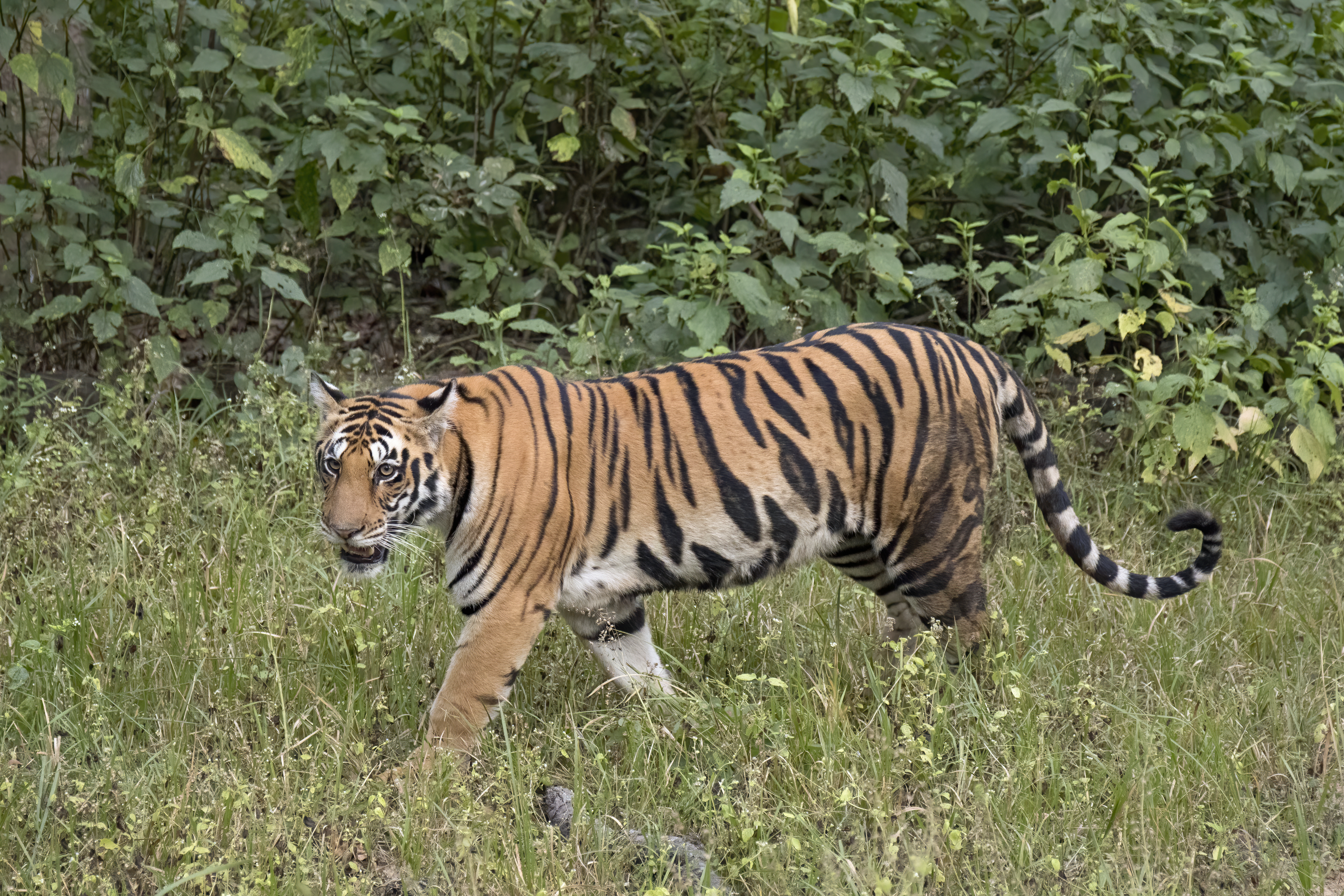

By Asmita - Jul 29, 2025
India solidifies its position as a global tiger conservation leader on International Tiger Day 2025, boasting approximately 3,682 wild tigers, nearly 75% of the world population. Success is attributed to conservation initiatives like Project Tiger and 58 designated reserves, employing strategies like anti-poaching laws, habitat protection, and community engagement. India's model challenges perceptions, showing tiger populations can thrive with governance, scientific tactics, and human-coexistence, creating a global conservation example. Celebrations highlighted progress, with government pledges to expand reserves and promote ecological conservation intertwined with cultural reverence for the national animal.

Charles J. Sharp via Wikimedia
LATEST
India's emergence as a global leader in tiger conservation has been firmly established as of International Tiger Day 2025. The country is now home to approximately 3,682 wild tigers, which accounts for nearly 75 percent of the global wild tiger population. This growth is a remarkable achievement considering that India had only about 1,706 tigers in 2010. The dramatic increase in tiger numbers has been the result of sustained conservation efforts spanning several decades, rooted in the government's flagship initiative, Project Tiger, launched in 1973. Today, there are 58 officially designated tiger reserves across India, covering over 70,000 square kilometers of protected habitat, managed under the National Tiger Conservation Authority (NTCA).
Key strategies behind India's success include stringent anti-poaching laws, habitat protection and expansion, advanced surveillance technology, and community engagement programs. Anti-poaching efforts have intensified with more frequent forest patrols and the use of camera traps and real-time tracking technologies to monitor tiger movements. Protecting tiger habitats has also been a priority, with reserves forming biodiversity hotspots that support not only the tigers but numerous other species. Moreover, India’s unique approach integrates human communities living near tiger habitats by promoting coexistence and providing them with economic benefits through eco-tourism and compensation schemes for wildlife-related losses. This inclusive model has helped reduce human-wildlife conflicts and fostered public participation in conservation.
India's conservation efforts contradict the common belief that high human population density and development inevitably threaten large carnivores. The country's success shows that with strong governance, scientific strategies, and community cooperation, tiger populations can thrive even in densely populated landscapes. The tiger’s expanding habitat now spans about 138,200 square kilometers, covering forests, grasslands, and wildlife corridors. This achievement has garnered global attention and serves as a model for other tiger-range countries, demonstrating that tiger recovery is possible without compromising economic development.
On International Tiger Day 2025, celebrations highlighted this monumental progress. Union Minister for Environment, Forest and Climate Change, Shri Bhupender Yadav, emphasized the government’s commitment by noting the increase in tiger reserves from 46 in 2014 to 58 today and announced a large-scale tree plantation drive across reserves to further restore habitats. Prime Minister Narendra Modi’s leadership was credited for setting a global example in conservation, intertwining ecological protection with cultural reverence for the tiger, India's national animal. The day’s theme also underscored the importance of indigenous peoples and local communities at the heart of conservation efforts, recognizing their vital role in securing a sustainable future for these majestic big cats.